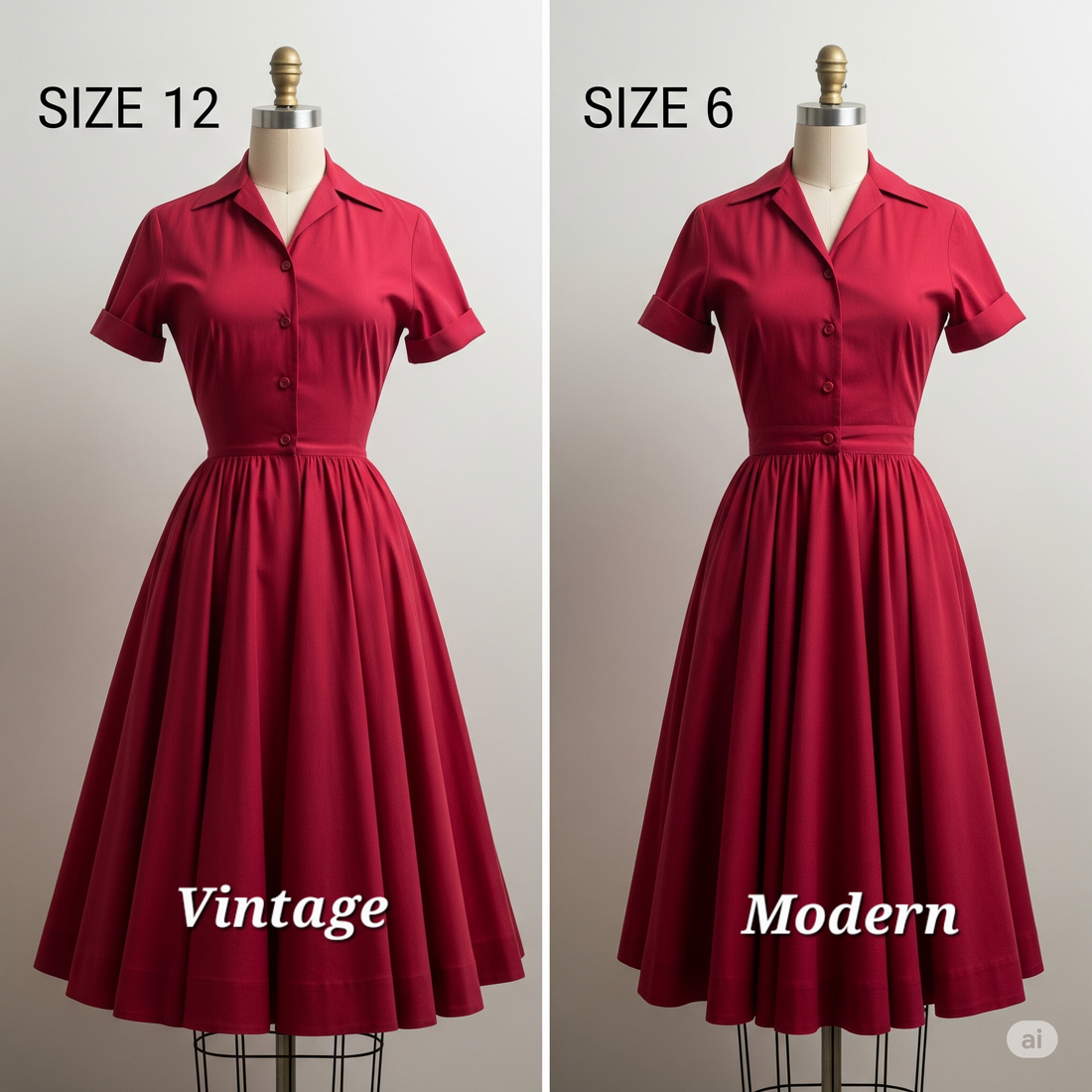
Vintage Clothing Sizing vs. Modern Day Sizing
Share
Fashion enthusiasts often fall in love with the allure of vintage clothing—the craftsmanship, the fabrics, and the unique patterns. However, many discover that vintage sizing can be a confusing roadblock. Let’s unravel why vintage sizes differ so much from modern sizing and how you can master the art of finding your perfect fit when shopping for vintage treasures.
Why Are Vintage Sizes So Different?
Vintage sizing standards were established decades ago and have evolved dramatically over the years. Here’s what you need to know:
Era-Based Sizing: A size marked as “12” in the 1950s or 1960s is comparable to a size “6” or even a “4” in today’s standards. That’s a full six sizes larger than the modern equivalent.
Vanity Sizing: Over time, clothing manufacturers have shifted sizes downward. This means a modern “small” could have been labeled a “medium” or even “large” several decades ago.
Changing Body Standards: Sizing charts have been adjusted to reflect changes in average body shape measurements, making the same tagged size look and fit very differently today.
How Do Modern and Vintage Sizes Compare?
|
Decade |
Typical Difference from Modern Size |
|
1950s/1960s |
Add 6 sizes |
|
1970s |
Add 4 sizes |
|
1980s/1990s |
Add 1–2 sizes |
For example: If you usually wear a modern size 4, you’d look for a size 10 or 12 in a 1950s dress.
Key Tips for Vintage Sizing Success
Always Check Measurements: Ignore the size label and focus on the garment’s actual measurements.
Know Your Own Measurements: Your bust, waist, and hips (in inches or centimeters) will be your best guide.
Account for Garment Construction: Vintage garments may lack stretch or have a different intended fit, so allow for ease and comfort.
Check the Era: The older the piece, the more likely the size label will be several numbers larger than your modern size.
Why Embrace Vintage Despite Sizing Challenges?
Unique Styles: Stand out with pieces that reflect genuine fashion history.
Quality Materials: Older fabrics and construction often outlast their modern counterparts.
Sustainable Choices: Shopping vintage keeps clothing out of landfills and supports circular fashion.
Final Thoughts
Navigating vintage sizing can seem daunting, but with a tape measure, some patience, and a bit of research, you’ll unlock a world of incredible fashion. The label is just a number—true fit starts with your measurements and a sense of adventure.
And remember, the measurements given on a item listing are the measurements of the garment, not of your body. You will need to leave room in the item for body movement.
To determine a fantastic fit, measure an item of your personal clothing that fits you comfortably and compare those measurements with the vintage item for like sizing.
Happy Vintage Shopping!
